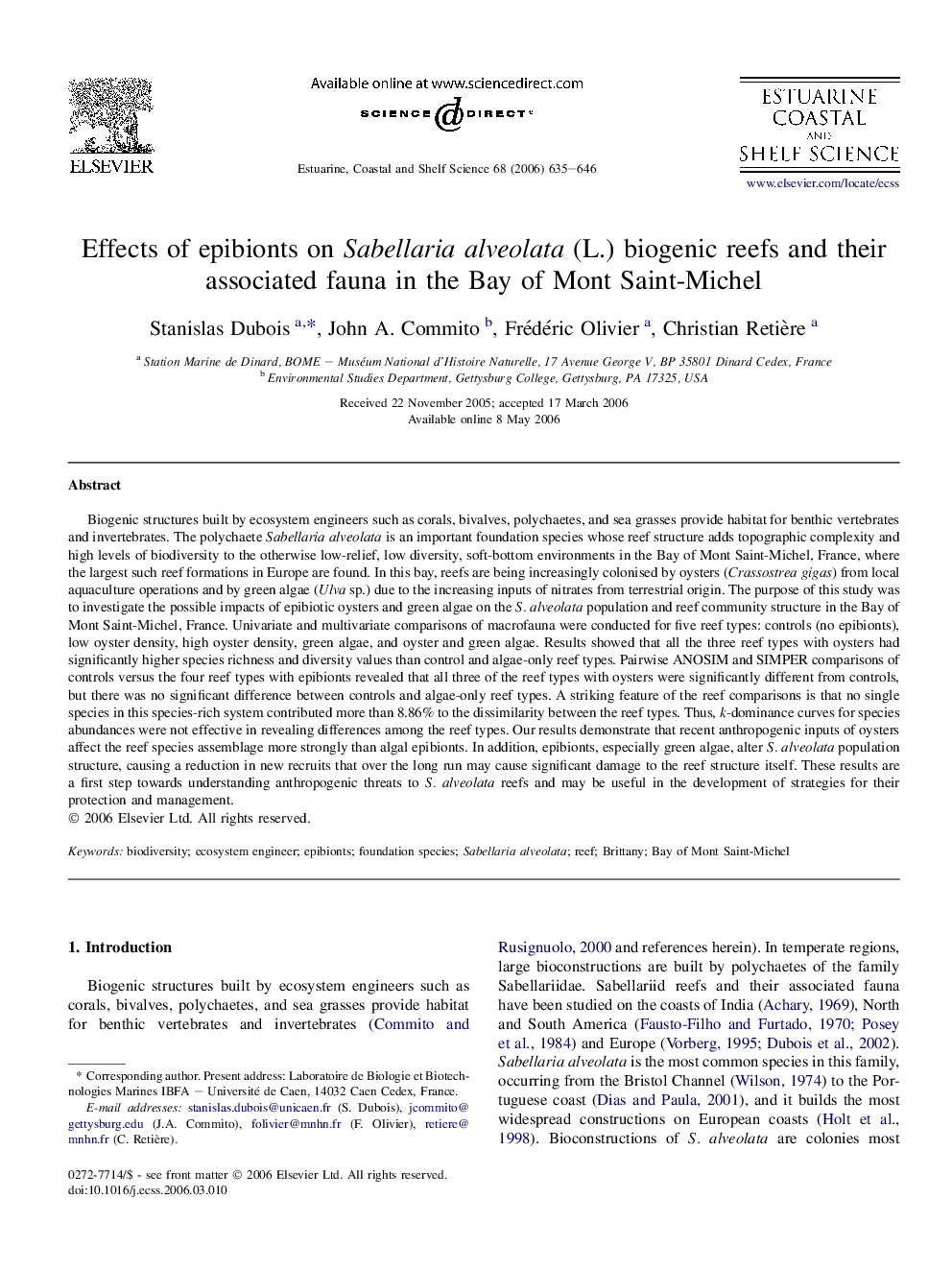| کد مقاله | کد نشریه | سال انتشار | مقاله انگلیسی | نسخه تمام متن |
|---|---|---|---|---|
| 4542514 | 1626712 | 2006 | 12 صفحه PDF | دانلود رایگان |

Biogenic structures built by ecosystem engineers such as corals, bivalves, polychaetes, and sea grasses provide habitat for benthic vertebrates and invertebrates. The polychaete Sabellaria alveolata is an important foundation species whose reef structure adds topographic complexity and high levels of biodiversity to the otherwise low-relief, low diversity, soft-bottom environments in the Bay of Mont Saint-Michel, France, where the largest such reef formations in Europe are found. In this bay, reefs are being increasingly colonised by oysters (Crassostrea gigas) from local aquaculture operations and by green algae (Ulva sp.) due to the increasing inputs of nitrates from terrestrial origin. The purpose of this study was to investigate the possible impacts of epibiotic oysters and green algae on the S. alveolata population and reef community structure in the Bay of Mont Saint-Michel, France. Univariate and multivariate comparisons of macrofauna were conducted for five reef types: controls (no epibionts), low oyster density, high oyster density, green algae, and oyster and green algae. Results showed that all the three reef types with oysters had significantly higher species richness and diversity values than control and algae-only reef types. Pairwise ANOSIM and SIMPER comparisons of controls versus the four reef types with epibionts revealed that all three of the reef types with oysters were significantly different from controls, but there was no significant difference between controls and algae-only reef types. A striking feature of the reef comparisons is that no single species in this species-rich system contributed more than 8.86% to the dissimilarity between the reef types. Thus, k-dominance curves for species abundances were not effective in revealing differences among the reef types. Our results demonstrate that recent anthropogenic inputs of oysters affect the reef species assemblage more strongly than algal epibionts. In addition, epibionts, especially green algae, alter S. alveolata population structure, causing a reduction in new recruits that over the long run may cause significant damage to the reef structure itself. These results are a first step towards understanding anthropogenic threats to S. alveolata reefs and may be useful in the development of strategies for their protection and management.
Journal: Estuarine, Coastal and Shelf Science - Volume 68, Issues 3–4, July 2006, Pages 635–646